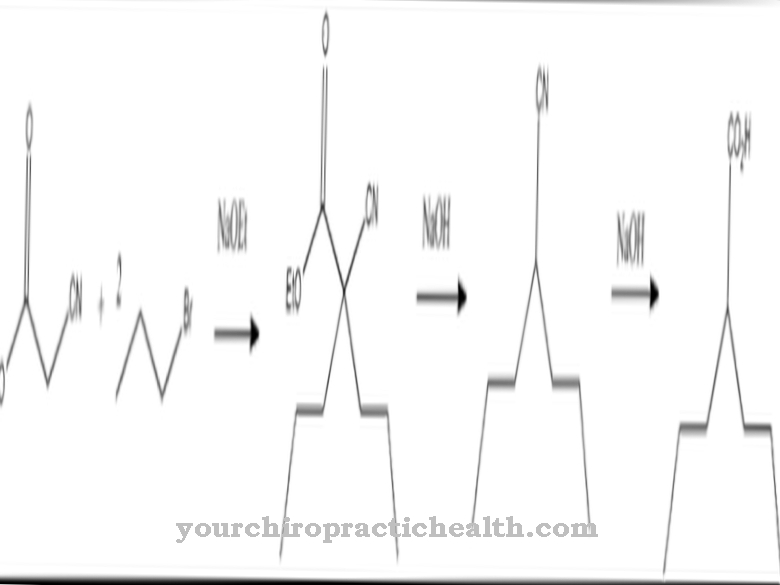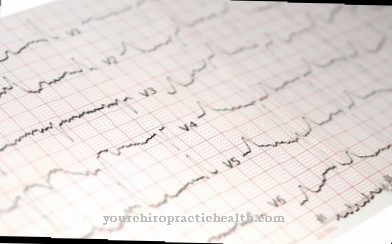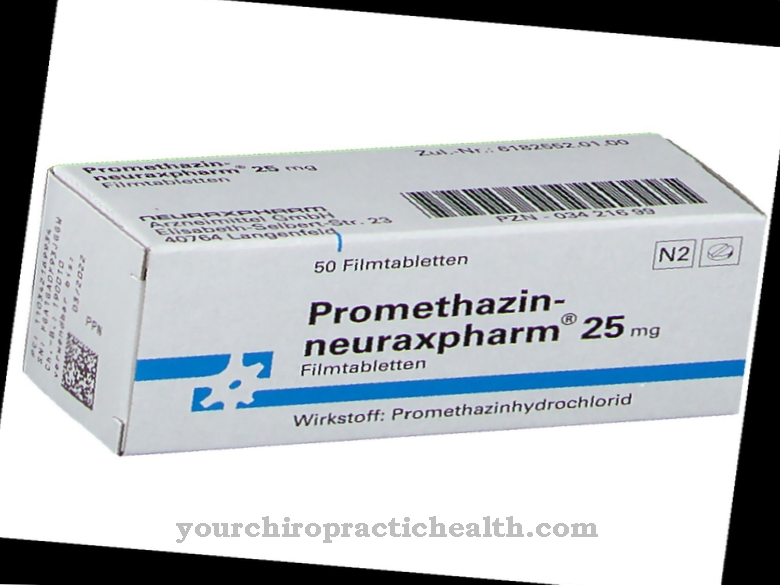The active substance Pindolol belongs to the group of beta blockers. He serves u. a. for the therapy of high blood pressure.
What is Pindolol?

Pindolol is an unselective beta blocker. It is also one of the class II antiarrhythmics.
The drug dilates the blood vessels and lowers blood pressure. The drug has been used in Europe since 1969 and is mostly administered in the form of tablets. Pindolol is also used in rescue medicine.
Pharmacological effect
Pindolol is a non-selective beta blocker. This means that the substance can develop its effect on the one hand on the beta-1 receptors of the heart and on the other hand on the other beta receptors. The beta receptors serve as binding sites for sympathetic fibers that belong to the autonomic nervous system. They are usually activated by the neurotransmitters adrenaline and noradrenaline, which the body produces itself. However, the body's own messenger substances are displaced at the receptors of pindolol, which in turn has a suppressive effect on their effects.
Pindolol works on the beta-1 receptors that belong to the heart to lower blood pressure. This leads to a reduction in the heartbeat volume. This effect relieves the heart's pumping function. In addition, the number of heartbeats decreases, resulting in the restoration of normal rhythm.
As a medicinal substance, pindolol is also suitable for a local treatment on the eye in order to lower the intraocular pressure. In this procedure, the agent is administered in the form of eye drops. However, it is still unknown how the blockade of the beta receptors causes this positive effect. Some medical professionals assume that the production of aqueous humor inside the eye is reduced by pindolol. Furthermore, the aqueous humor that is already present drains off better.
Pindolol is mainly administered orally or intravenously. The bioavailability of the active ingredient is 95 percent, while the plasma protein binding is 60 percent. It is metabolized by the liver. Pindolol has an average plasma half-life of four hours. Then 40 percent of the substance is eliminated through the kidneys.
Medical application & use
The most important application of pindolol is high blood pressure. The aim is to reduce the excessively high blood pressure values and to normalize the blood pressure permanently. Another indication is heart pain in the context of an angina pectoris attack and coronary heart disease (CHD). Pindolol is suitable for reducing the stress on the heart. In addition, pindolol normalizes rapid cardiac arrhythmias.
Through the administration of eye drops, pindolol is also used to lower the increased intraocular pressure that occurs in glaucoma (glaucoma). This is especially true in the case of chronic wide-angle glaucoma, which is a special form of glaucoma.
In rescue medicine, pindolol is used to treat supraventicular tachycardia (SVT). This cardiac arrhythmia, which can show up after taking nitroglycerin, results in an excessively high pulse of more than one hundred beats per minute.
Pindolol is commercially available in tablet form. The drug is taken one to three times a day, regardless of meals.
Risks & side effects
The administration of pindolol can cause undesirable side effects in the patient, but they do not necessarily occur. In most cases, the affected people suffer from diarrhea, constipation, nausea, vomiting, tiredness, drowsiness, nervousness, sweating, depression, headache, sleep disorders and allergic skin reactions such as itching and redness.
Occasional tears, conjunctivitis, slow heartbeat, feelings of coldness in arms and legs, dry mouth, muscle cramps, and muscle weakness may also occur. Increased heart muscle weakness or circulatory disorders, potency weakness, breathing difficulties, increased drop in blood pressure, worsening of diabetes mellitus and fainting spells are rare. If a patient suffers from impaired kidney function, the symptoms can also worsen.
If there are certain contraindications, pindolol must not be used. These contraindications include severe diseases of the cardiac conduction system, severe cardiac insufficiency, cardiovascular shock, a slow heartbeat of less than 50 beats per minute and a recent heart attack. Further contraindications are low blood pressure, bronchial asthma, COPD, overacidification of the metabolism or nutritional disorders in the cornea.
In addition, the administration of pindolol must be carefully checked if the functions of the liver and kidneys are impaired, a high level of physical exertion or strict fasting has occurred, a pheochromocytoma is present, or the patient has severe psoriasis (psoriasis). The same applies to pregnancy and breastfeeding. Careful consideration of the administration of pindolol to children is also required.
Interactions with other medicinal substances are also possible when taking pindolol. For example, the simultaneous administration of insulin or other substances used in diabetes therapy can increase or prolong their effectiveness. If pindolol and tricyclic antidepressants, narcotics, diuretics, phenothiazines, barbiturates and vasodilators are administered at the same time, there is a risk of a drop in blood pressure.
The patient's heart rate may decrease when pindolol is given at the same time as cardiac glycosides or drugs that work in the brain such as clonidine, methyldopa, reserpine, and guanfacine. If clonidine is stopped abruptly and pindolol is taken at the same time, a very sharp rise in blood pressure is possible.
Simultaneous administration of non-steroidal anti-inflammatory drugs such as indomethacin and the beta blocker increases the risk that the antihypertensive effect of pindolol will be weakened. Pindolol also reduces the effects of adrenaline. In such cases, it is important to increase the adrenaline dose.



























